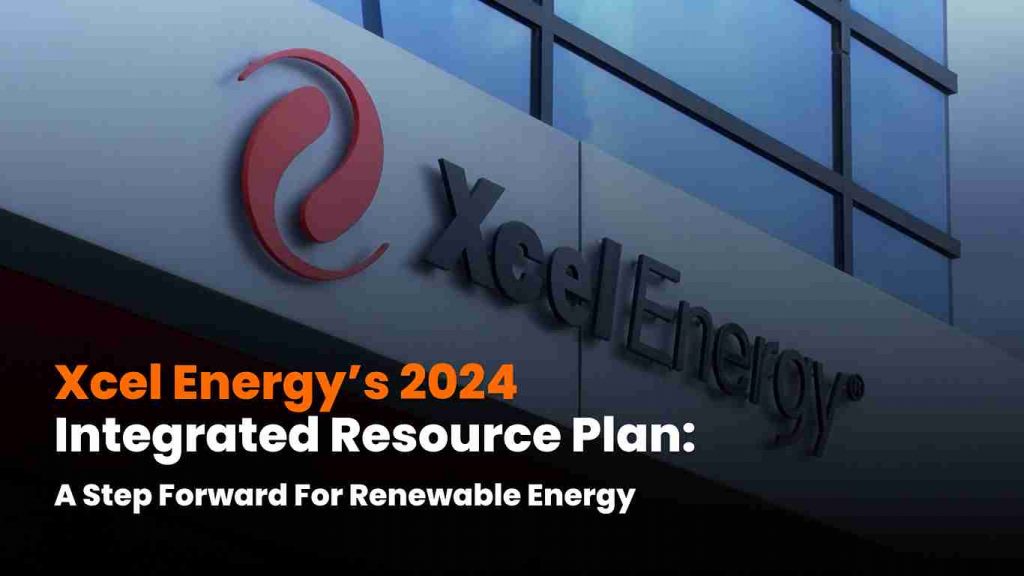On February 20, 2025, the Minnesota Public Utilities Commission approved the settlement agreement for Xcel Energy’s 2024 Integrated Resource Plan (IRP). This decision represents a significant step toward a cleaner energy future, with a strong emphasis on distributed renewable energy, battery storage, and customer-driven solutions. The settlement outlines Xcel Energy’s commitment to reducing reliance on fossil fuels, accelerating the retirement of coal plants, and integrating new clean energy technologies—all while keeping electricity costs manageable for consumers.
For businesses operating in the solar energy sector, such as those utilizing Sunhub’s B2B platform, these developments highlight a growing market for renewable energy projects, battery storage solutions, and community solar initiatives. Let’s take a closer look at what this settlement means for the renewable energy landscape and how businesses can leverage these opportunities.
Shifting the focus to distributed energy solutions
Utilities like Xcel Energy have historically met energy demand by expanding fossil fuel infrastructure or constructing large-scale power plants. However, with increasing pressure to transition to clean energy, the focus is now shifting toward distributed energy resources (DERs)—smaller-scale technologies like rooftop solar, battery storage, and community solar projects that generate power closer to where it is consumed.
A coalition of renewable energy advocates, known as the Distributed Solar Parties, played a key role in shaping the IRP. This group—comprised of organizations such as Vote Solar, Cooperative Energy Futures, the Environmental Law & Policy Center, and the Institute for Local Self-Reliance—has long championed local solar energy solutions as a way to ensure affordable and reliable electricity access for all, including lower-income communities.
By influencing Xcel Energy’s Distributed Capacity Procurement (DCP) process, these groups helped push for greater investment in local solar, battery storage, and other DERs. Their efforts have contributed to a broader shift in how utilities plan for and integrate clean energy resources into their grids.
Key highlights of the settlement agreement
The settlement agreement authorizes the addition of 2,170 megawatts (MW) of new energy capacity, which includes a mix of gas-peaking resources, standalone battery storage, and hybrid solar-wind-battery projects. The specific allocations include:
- 1,152 MW of gas-peaking resources – These plants will provide backup power during periods of high demand but will not operate continuously, helping to balance the grid without excessive fossil fuel reliance.
- 380 MW of standalone battery storage – This allows excess solar and wind energy to be stored and used when needed, reducing the reliance on fossil fuels.
- Commitments to 3,200 MW of wind, 400 MW of solar, and 600 MW of additional storage by 2030 – These investments support Minnesota’s carbon-free electricity targets under state law.
- $5.7 billion in tax credits from the Inflation Reduction Act (IRA) – These funds will help keep annual rate increases below 1%, making the clean energy transition more affordable for consumers.
This agreement avoids the construction of new high-capacity fossil fuel plants while maintaining flexibility for future advancements in clean energy technology.
What this means for the solar industry and B2B market
For businesses in the solar energy sector, the approval of this IRP signals several key opportunities:
- Increased demand for distributed solar solutions – As utilities shift toward decentralized power generation, there will be greater demand for businesses that supply and install solar panels, battery storage systems, and other DERs. Companies utilizing Sunhub’s B2B solar platform can connect with potential buyers looking to capitalize on these trends.
- Growth in energy storage adoption – The inclusion of large-scale battery storage in Xcel’s plan highlights the importance of energy storage in grid reliability. Businesses that provide or integrate battery storage solutions will be well-positioned to benefit.
- Potential for new community solar projects – Community solar allows multiple customers to share the benefits of a single solar installation. With Minnesota’s clean energy goals advancing, businesses involved in the community solar sector can expect more opportunities for project development.
- Policy-driven market expansion – With incentives like IRA tax credits supporting clean energy adoption, businesses can expect financial support and lower costs associated with solar investments. This makes it an excellent time for solar suppliers, developers, and installers to expand their operations.
Industry perspectives on the settlement
John Farrell, co-director of the Institute for Local Self-Reliance, emphasized the need for utilities to better plan for distributed energy resources, stating:
“Xcel needs to do more to plan for and to integrate distributed energy resources like rooftop and community solar that create widespread economic benefits. We’re happy about the progress on the state’s carbon reduction goals, and look forward to future discussions about maximizing the use of cost-effective local energy resources.”
Similarly, Will Kenworthy, Vote Solar’s Midwest Senior Regulatory Director, noted:
“This settlement is a step toward a cleaner, more equitable energy future. By prioritizing renewable energy, Xcel Energy is making critical investments that will lower costs, reduce emissions, and expand access to clean energy for all. But Minnesota can do more to maximize the value of distributed energy resources, like rooftop solar. We look forward to engaging with Xcel and other stakeholders to develop a broad, fair, and cost-effective program that leverages the considerable opportunities of distributed energy resources.”
The road ahead for clean energy in Minnesota
The approval of Xcel Energy’s 2024 IRP marks progress in Minnesota’s transition toward a carbon-free electricity system. However, challenges remain, particularly in ensuring that local solar, battery storage, and community energy projects receive the attention and investment they need.
For businesses in the solar industry, this evolving landscape presents both challenges and opportunities. By staying informed about policy changes, leveraging available incentives, and connecting with other industry players through platforms like Sunhub, businesses can position themselves for success in the growing renewable energy market.
As Minnesota continues its clean energy journey, the role of distributed solar and storage will only become more vital. Companies that embrace these trends will be at the forefront of a rapidly expanding industry—one that is helping to build a more sustainable and resilient energy future.

